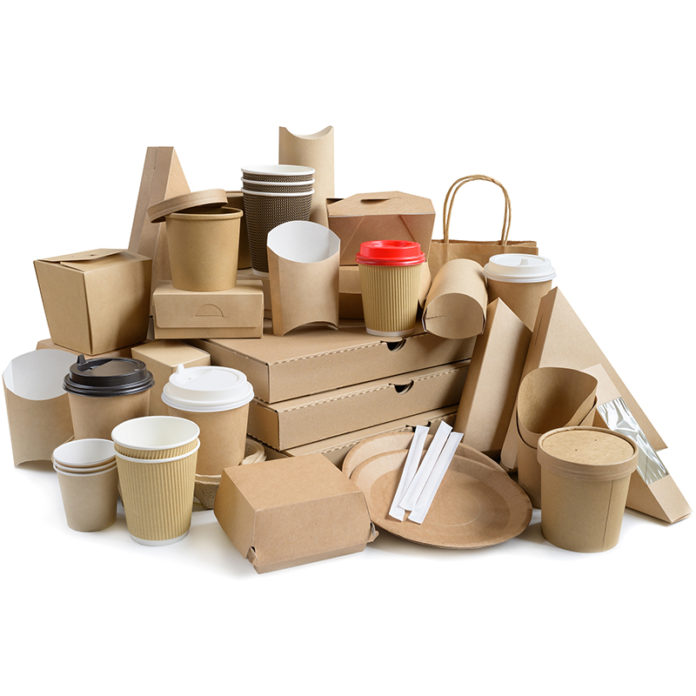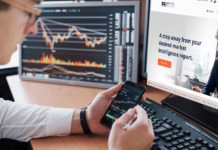
If you buy processed food, occasionally, you may have noticed companies that package their processed food using paper while others use plastic. Food packaging is mandatory to ensure the food is clean and preserved according to the required standard.
Even though the packaging is important, there is discussion o9n the right packing material to use. Some argue paper food packaging is okay, while others prefer plastic food packaging. It leaves the question of which one is better?
It is a discussion that is ongoing, and in this blog post, we’ve researched the pros and cons of respective packaging. Through understanding the pros and cons, it will lead to a conclusion on which one is better.
It is important to note that there are also other materials used to package the food but paper and plastic remain the most used material worldwide. It is for this reason why the discussion is centered between these two types of food packaging.
To give you an overview of the discussion, some argue that plastic leads to negative environmental effects. In contrast, others prefer plastic food packaging as the best material as it helps keep the food fresh.
It brings confusion to conclude which is better, but here we try to make you understand which is better to use as we look at the pros and cons of each material.
Plastic Packaging
Plastic food packaging did not start yesterday. Plastic usage, which was deemed an accident, started in 1907—however, its use gained popularity in the 1950s after the development of high-density polyethylene.
The plastic is made from the first thing, which makes it even to the right food packaging material to use. Plastics are made from fossil fuels, and it is known they ate non-renewable sources.
The use of plastic is made famous today due to reliance on plastic. This reason has led it to be impossible to cut down the use of plastic food on the packaging. People see more advantages of using plastic than there are huge disadvantages.
Some argue that, when compared to other packaging materials, plastic packaging is one of the best. It is a long-lasting packaging material that may also be used to package various goods that businesses want to display.
Since plastic packaging is lightweight, it is advantageous for businesses to utilize it if they wish to save money on transportation and shipping.
Plastic packaging is useful for keeping food fresh in the food industry. It will aid in the reduction of food waste. There is no doubt that a product that has been wrapped and comes with plastic packaging does not require protection. Companies used many types of plastic to package their products.
Natural gas and feedstocks derived from the refining of crude oil and feedstocks derived from the natural gas process are utilized in the creation of plastic. Almost everyone is aware that natural gas and oil extraction have detrimental consequences for our ecosystem.
As a result, from this perspective, plastic packaging is unsuitable. Furthermore, once you bring a food product home in plastic packaging, you will undoubtedly discard it after a single usage.
Advantages of plastic
Plastics are cheap
Plastic is the least expensive of all the commonly used packaging materials.
Plastics are Durable
Plastics do not easily break or become damaged, and they can take falls or minor stress without being damaged, providing excellent protection. When plastic packaging is stacked on top of each other, it is less likely to be damaged, making product transportation easier.
Plastic that lasts a thousand years takes roughly a thousand years to degrade; it can last for a long time without deterioration. However, while this is a benefit, it is also a disadvantage.
Lightweight
Compared to glass and wood choices, typical plastic materials weigh nearly nothing, which is beneficial for lowering the footprint when transporting things packaged with plastics.
Superb versatility
Plastic packaging comes in various shapes and sizes, ranging from flexible and adaptable to solid and durable types like plastic containers.
Drawbacks of plastic
The large carbon footprint of production
Plastic manufacture also pollutes the environment by emitting excessive levels of CO2. Even though plastic can be recycled, nearly 91% of all current plastic has never been recycled.
Degradation of the Environment
Plastics are generally non-biodegradable; therefore, they can take hundreds of years to decompose. This is owing to the intermolecular connections that make up plastics, whose structure prevents them from rusting or decomposing. Also, inappropriately disposed plastics end up in water reservoirs, block waterways, and float in reservoirs, contaminating and obstructing them.
Low Melting Point
Plastics have a low melting point; thus, they can’t be employed in high-heat environments. This also means they can’t be utilized as a furnace protection barrier. Polystyrene, acrylics, polyethylene, and nylons, extensively used in packaging, home, and office appliances, are very flammable. As a result, they are a fire hazard.
Plastics are usually made from non-renewable materials.
Even though the first plastic polymers were made from plant-based fibers, most of the products we make today are made from fossil fuels. This product is normally made of petroleum, although it can also be made of natural gas.
Approximately 4% of these fuels are used to develop new products in the plastics industry. The cost of fossil fuels for plastics could reach 20% during the next decade, based on the number of resources needed during the refinement process and the predicted rise in demand.
Causes pollution
Some people believe that plastic pollutes the environment more than paper, yet this is not the case. According to a study, the manufacture of paper packaging bags pollutes the environment by 70% more than the production of plastic packaging bags. Furthermore, plastics harm not just the air but also the water.
Plastic pollutes the oceans and land, and it can cause animals to suffocate. Sunlight breaks down the plastic molecules over time, poisoning the soil and decreasing the productivity of the land. When plastic eventually degrades, it might still leave microplastic behind, which is equally harmful to the environment.
Paper packaging
Paper is also another type of material used in food packaging by several companies. Paper food packaging is seen as better than plastic, while others argue the opposite.
Paper food packaging isn’t intended to be used as a long-term solution, but it can come in handy when dealing with any form of food that’s meant to be consumed quickly and for which you don’t want to use your other containers.
Benefits of Using Paper Packaging
Recyclable
The vast majority of store-bought paper packaging is recyclable. Paper packaging is more convenient to recycle than plastic packaging. Even some types of paper used for packaging can be recycled multiple times and returned to their original state.
Excellent Printing
The paper package is thought to be the best for providing good printing results. Paper packaging, as opposed to plastic packaging, can produce amazing printing results.
Drawbacks of Paper Packaging
Consume More Energy
Paper packaging consumes four times more energy during the manufacturing process than plastic packaging. It means that the production of paper packaging necessitates a significant amount of fuel.
Recycling ineffective
The recycling of paper packaging can be inefficient since it requires more energy than the manufacturing of new paper packaging. When compared to the creation of plastic packaging in pounds, paper packaging consumes 91 %more energy.
Which one is better?
Back to the question of the day, Paper food packaging and plastic food packaging, which is better, several factors lead to the final decision which one is better than the other. However, the two have a negative impact on the environment.
When compared to plastic packaging, paper packaging is regarded to be more environmentally friendly. However, when it comes to durability, plastic packaging outperforms other materials.
If you want to have a lower negative impact on the environment, you should use more sturdy and long-lasting packaging, regardless of the material used.
You can retain and reuse a long-lasting and sturdy package for multiple reasons.
However, plastic is a material that has been used for decades and offers a wide range of packaging options to businesses and other markets.
Final words
Plastic and paper packaging are growing increasingly widespread and are becoming an integral component of everyday life. Choosing between paper and plastic packing has advantages in both cases.
The choice will be based on a firm’s desire and criteria for generating and delivering in the organization. However, try to select high-quality, long-lasting materials that will keep your product safe and help reduce pollution in the environment.





